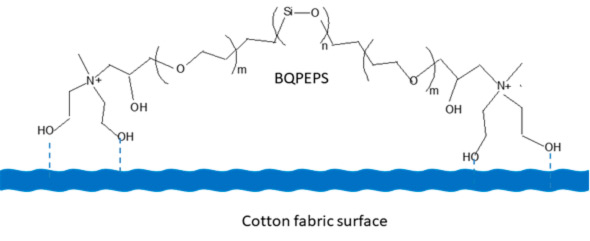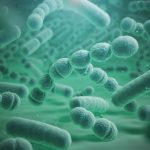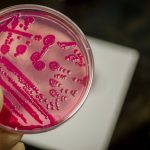Fabrics production is the fourth largest industry in the world. Three aspects must be considered regarding textile fibers use and comfort: wettability, breathability, and softness. Hydrophilicity is the key property to improve these three aspects. Therefore, certain polymers with hydrophilic groups are added to the fiber in order to reach the desirable condition. However, increasing hydrophilic groups to certain point decreases softness. Polydimethylsiloxane (PDMS) is the polymer widely used due to its siloxane (Si-O-Si) helical structure that favors its attachment to the fiber. Recently, it has been claimed1 increase in the three mentioned above properties using quaternary ammonium polyether polysiloxane (BQPEPS). The choice of this polymer has been inspired in the superhydrophilic structures of nature leaves where microchannels at the surface allow water spread very fast via capillary suction. In the case of BQPPS and in contact with water the ammonium positive charge and the attached hydroxyl groups cross link the cotton surface acting as channels but at the same time the hydrophobic component of the polymer curved up forming a bell shape due to its preferred contact with air (Figure); therefore, increasing the surface-air area and diminishing the fabric surface tension, consequently, increasing softness, nevertheless using BQPEPS, wettability and breathability of the cotton fabric also increase.
Antimicrobial activity has also been reported2 by introducing pendant levofloxacin on polysiloxane polymer

1.- Y. Sun, W. Xiong, W. Cheng, H. Wang, T. Mao, Ind. Eng. Chem. Res. (2022) https://doi.org/10.1021/acs.iecr.2c00021
2.- A. Kugel , B. Chisholm, S. Ebert, M. Jepperson , L. Jarabek , S. Stafslien, Polym. Chem., 2010, 1, 442-452





